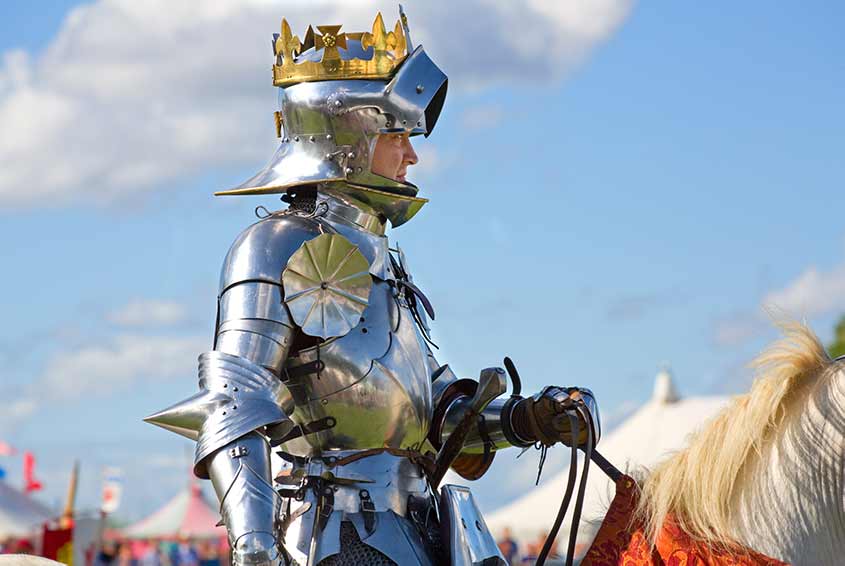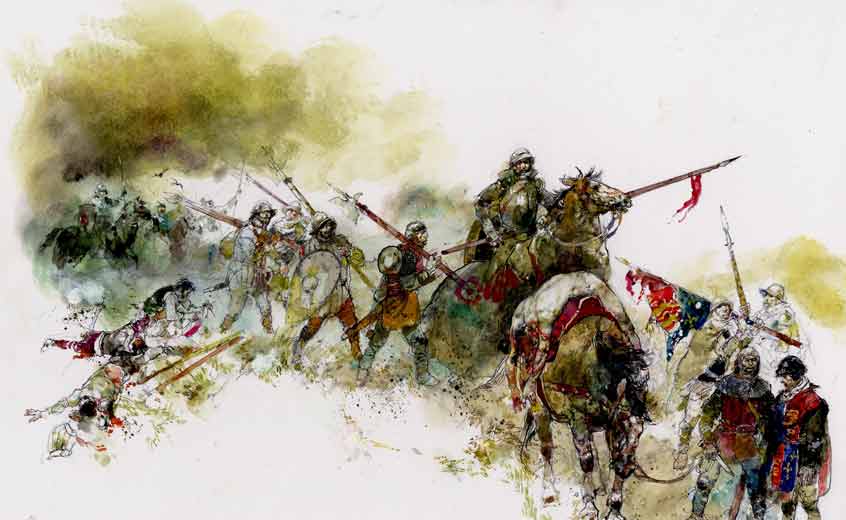Richard III: Discovery and identification
How Richard III died
On 22 August, 1485, at the Battle of Bosworth, Richard III led a mounted cavalry charge against Henry Tudor in an attempt to kill him and end the conflict. During the ensuing fighting Richard III was surrounded by Tudor’s supporters who cut him down. Contemporary accounts generally agree that a blow, or blows to the head killed Richard III, some crediting Welsh foot soldiers armed with halberds as the killers.
Some of these accounts are supported by the evidence on Richard III’s skeleton, allowing us to explore possible scenarios for his dying moments. This trauma tells us that Richard III sustained multiple blows to the head from a number of different bladed weapons, suggesting he was ferociously attacked from all sides, probably by more than one person.
None of the skull injuries could have been inflicted on someone wearing a helmet of the type favoured in the late 15th century; so it would appear that Richard III lost his helmet, or had it forcibly removed during the battle.

A modern re-enactor portraying Richard III. He is dressed in metal-plate armour of a type common in the late 15th century.
One massive, fatal blow to the base of the skull could have been caused by a weapon such as a halberd.
Interestingly, there are few wounds to the rest of his body. In particular, there are no defensive wounds on his forearms or hands. This may be evidence that he was wearing armour, the metal plate bearing the brunt of the blows.
Some of the wounds would have been difficult or impossible to inflict if Richard III was still wearing his armour and were therefore probably delivered after he was dead.
One wound, a stab through the buttocks, may be a symbolic ‘insult injury’ delivered to the king’s body after death. This would corroborate accounts that his body was treated less than reverently after the battle. Polydore Vergil tells us that after the battle, Richard III’s body ‘naked of clothing’ was ‘laid upon a horse back with the arms and legs hanging down on both sides.’
It is easy to imagine then, the last and most insulting blow being delivered by a victorious Lancastrian soldier to the king’s body as it was paraded back to Leicester.

Richard’s body is brought to Leicester. Artwork: Victor Ambrus.